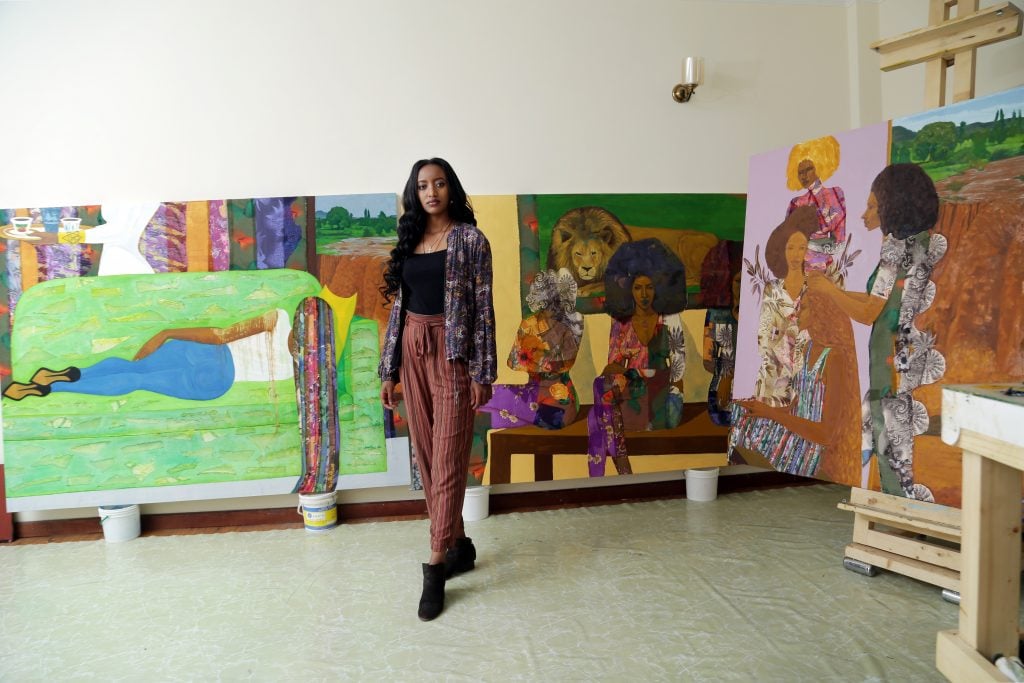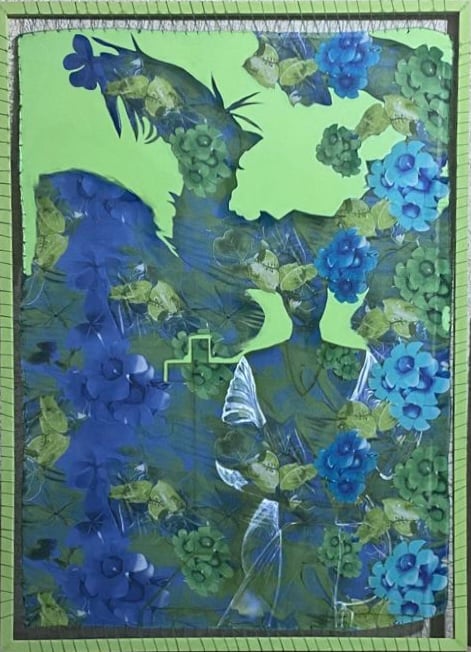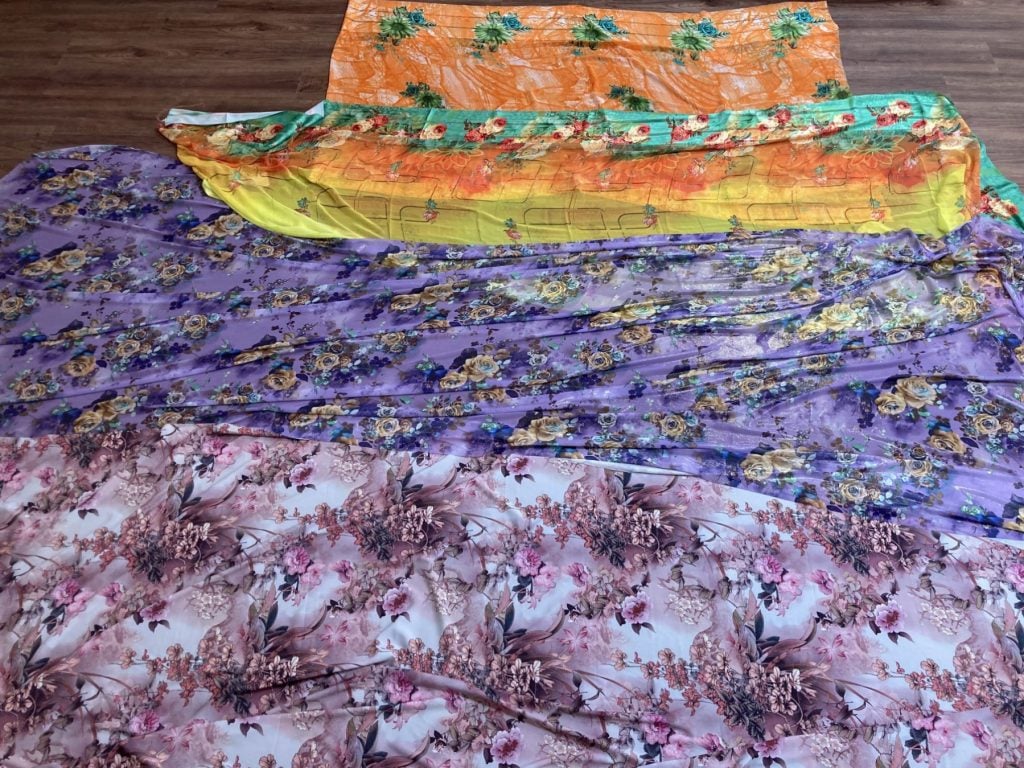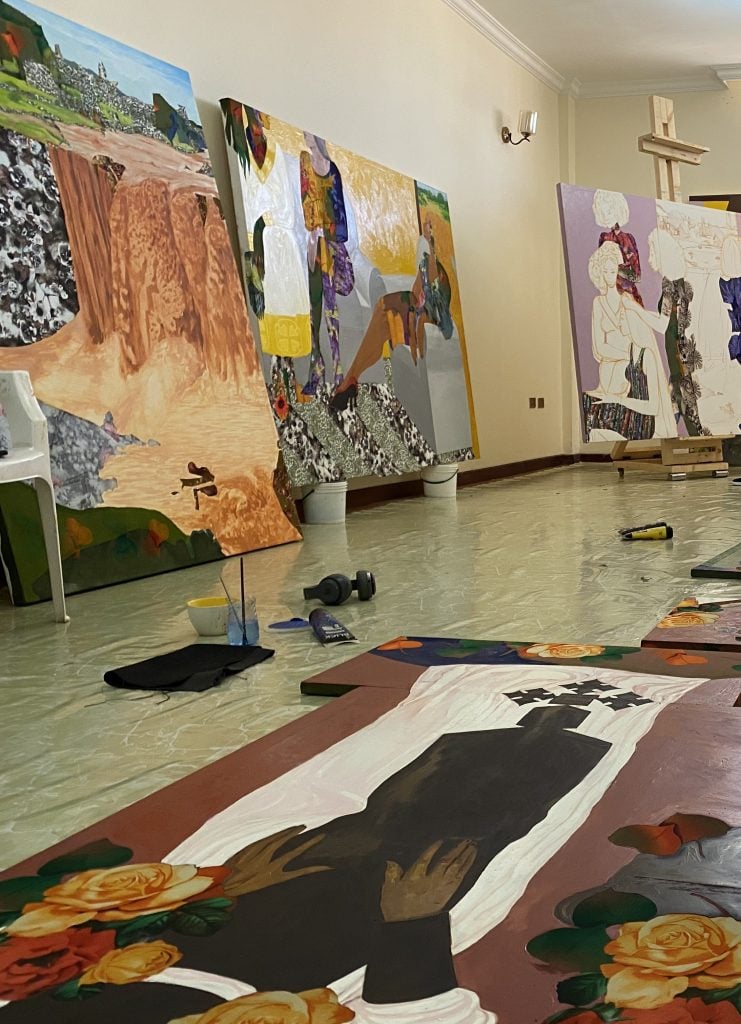Studio Visit
Painter Hana Yilma Godine Uses Ethiopian Textiles to Construct Fantastical Compositions of Women in Repose
Ahead of her two-gallery solo show in New York, the Ethiopian painter took us inside her Addis Ababa studio.

Ahead of her two-gallery solo show in New York, the Ethiopian painter took us inside her Addis Ababa studio.

Julia Halperin

Hana Yilma Godine paints women in private moments: in repose on the couch, at the hair salon, preparing for a wedding. The artist, who received her MFA from Boston University in 2020, studied with celebrated Ethiopian artist Tadesse Mesfin in her hometown of Addis Ababa. The flattened perspective and elongated figures in her compositions recall classical Ethiopian iconography, while her materials—she paints on fabrics that women buy at local markets and turn into dresses—come from everyday life.
Goodine’s second U.S. solo exhibition, “A Hair Salon in Addis Ababa,” on view through March 5, spreads across two venues in New York: Fridman Gallery and Rachel Uffner Gallery. While her home country is facing civil war, Goodine imagines a parallel dimension where women are safe and free to express themselves.
We caught up with the Addis Ababa-based artist ahead of a three-month residency at Fridman’s location in Beacon, New York, about life in the studio.
What are the most indispensable items in your studio and why?
Paint and brush. I use acrylic and oil, depending on the surface, as I paint on both canvas and fabrics. The rest can be replaced.
Is there a picture you can send of your work in progress?
I have just opened a two-gallery solo exhibition at Fridman Gallery and Rachel Uffner Gallery, and all of my work has been completed for these shows. But here is a work when it was in progress:

A work in progress in the studio. Courtesy of Hana Yilma Godine.
What is the studio task on your agenda tomorrow that you are most looking forward to?
I can plan all sorts of things and will probably end up doing something else. Tomorrow I have to start thinking about the next body of work, new structures, new experiments with materials and techniques. For my upcoming residency with Fridman Gallery in Beacon I’ve brought with me traditional Ethiopian fabrics that are typically used to make women’s dresses. I look forward to pinning them up on a wall of my new studio and considering what they will become.

Fabrics that will be incorporated into the work. Courtesy of Hana Yilma Godine.
What kind of atmosphere do you prefer when you work? Do you listen to music or podcasts, or do you prefer silence? Why?
Usually, I prefer to listen to music, but my studio practice also has moments of silence. Sometimes I listen to lectures. Sometimes I take breaks and listen to the news. Music helps me focus on the making. On my playlist you can find the “Ethiopiques” series of albums of Ethio-Jazz musicians such as Mulatu Astatke, music from Mali and other African countries, as well as Western music.
What trait do you most admire in a work of art? What trait do you most despise?
I love the materiality and techniques of painting. I can’t think of anything I despise about art. I have appreciation for almost every painting I see.
What snack food could your studio not function without?
I don’t usually eat when I work, but I enjoy drinking coffee or tea.
Who are your favorite artists, curators, or other thinkers to follow on social media right now?
I am not really active on social media, but I do admire Julie Mehretu, Tschabalala Self, and Jennifer Packer, as well as Paul Cézanne, Nicolae Grigorescu, and Tadesse Mesfin (Ethiopian painter who was one of my professors).

A glimpse inside the artist’s studio, where artworks cover every surface. Courtesy of Hana Yilma Godine.
When you feel stuck in the studio, what do you do to get un-stuck?
I rarely get stuck when working in my studio. When I do, I try to keep going by listening to music, working on a new painting, doing different types of tasks, like stretching a canvas or fabric.
What is the last exhibition you saw that made an impression on you?
Adam Pendleton’s “Who Is Queen?” at MoMA in New York.
If you had to put together a mood board, what would be on it right now?
I’d use images I’ve collected on my travels or walks, resources I found on the internet, photos I’ve taken.